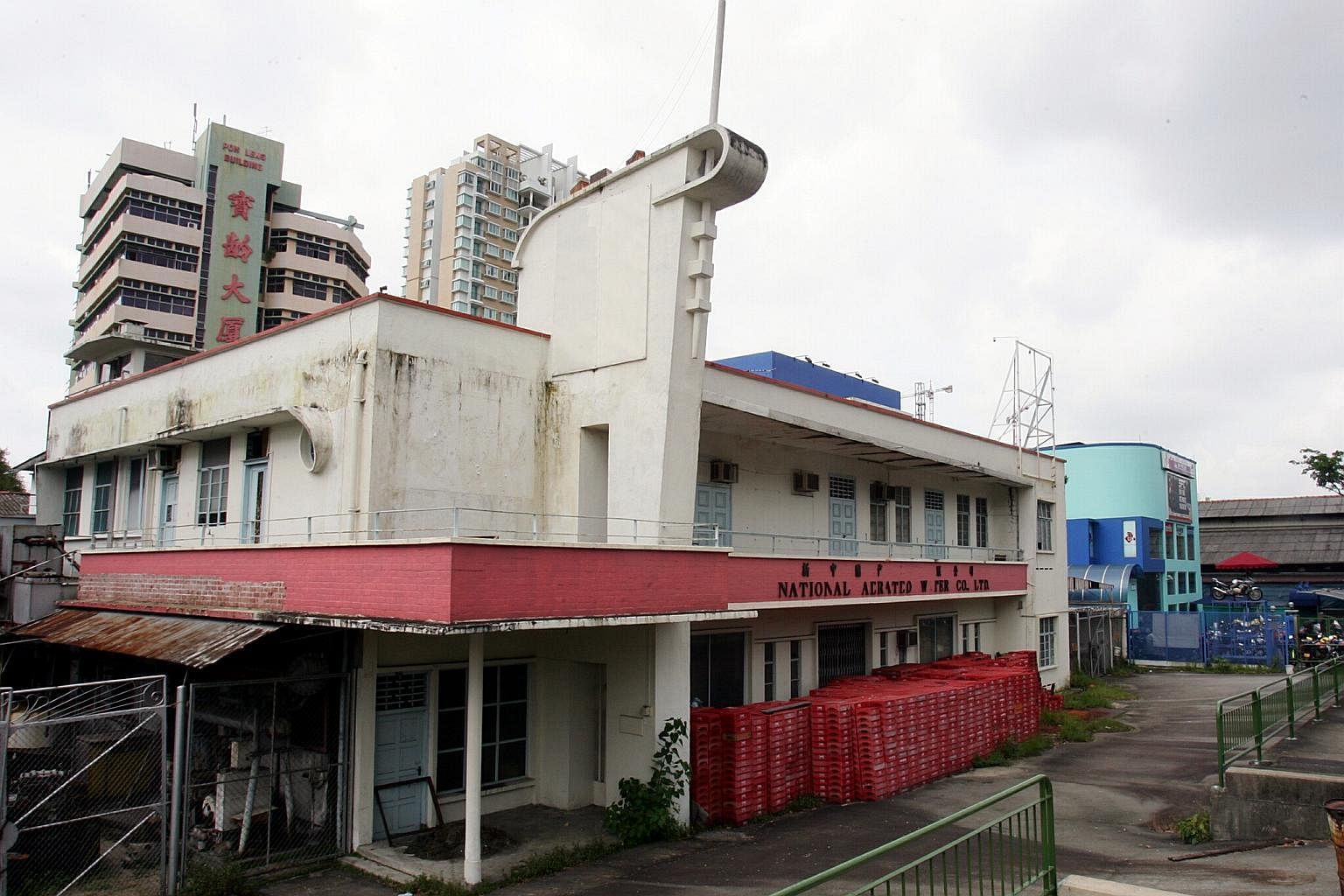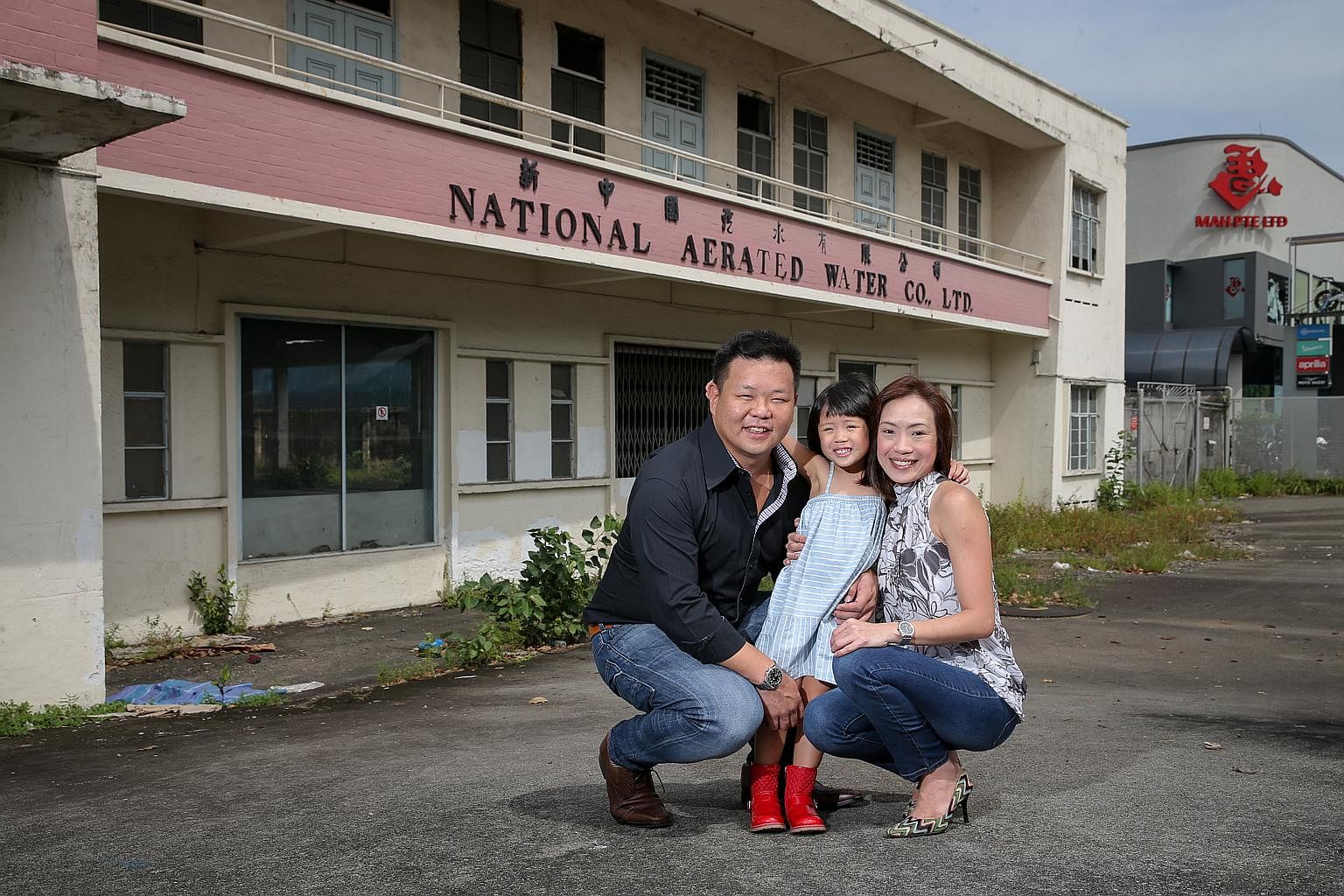Former National Aerated Water Company building could be conserved: URA
Sign up now: Get ST's newsletters delivered to your inbox
Melody Zaccheus
Follow topic:
SINGAPORE - A disused bottling factory, the former National Aerated Water Company, could be conserved, said the Urban Redevelopment Authority (URA).
The two-storey building off Serangoon Road is considered to be one of the last few vestiges from Singapore's industrial past.
In a statement to The Straits Times on Thursday (Dec 15), a URA spokesman said: "We recognise the architectural and heritage value of the National Aerated Water Company's building and its role as a landmark in the area.
"This is a private property, and we will engage the building owner to explore the possibility of conserving the building."
Last week, the company sold its freehold site, home to the landmark, to Malaysia-listed developer Selangor Dredging for $47 million. The site near the Potong Pasir MRT station can yield 117 apartments.
News of the sale and potential razing of the historic building that once bottled iconic soft drinks Sinalco, Kickapoo Joy Juice, Green Spot and Royal Crown Cola, caused ripples of concern among many in the heritage community.
A Facebook page called Save The National Aerated Water Company Building was also set up over the weekend in a plea for it to be saved.
Several in the community had flagged the art-deco structure to the URA for conservation in 2007. The site has been zoned for residential use in the country's land use Master Plan.
Dr Yeo Kang Shua, an assistant professor of architecture and sustainable design at the Singapore University of Technology and Design, said that apart from its art deco appearance, the building's rear features a unique saw-tooth roof structure. He said: "Its clever design allowed a lot of daylight into a very deep factory building therefore minimising the reliance on electricity."
He added: "I hope that the new owner appreciates the historical significance of the site to Singaporeans and is open to work with the authorities to work on a development plan that is sensitive to the historic structure."
The building has sat dilapidated after operations ceased in the 1990s. Prior to the sale, there was a legal tussle over shares in the factory.

The National Aerated Water Company building in 2006.
PHOTO: ST FILE
Heritage blogger Jerome Lim, a naval architect, said the company moved to Kallang to expand upon getting the licence to bottle Sinalco, a German beverage. He noted that it is part of Singapore's history of light industrial buildings and an example of post-war modern architecture.
He said: "The building has been a landmark in the area since the mid-1950s. It has become intertwined with the whole fabric of the area.
"It is helps us to recall the industrial past of the Kallang area and the other industries such as the brickmaking kilns and sawmills that were here."
The other few existing examples of Singapore's industrial heritage include national monument St James Power Station and the conserved former Kallang Airport.
Meanwhile, the rear end of national monument Ford Factory, which was home to the first car assembly plant in South-east Asia, was partially demolished in 1997 for the Hillside condominium. Only its front portion was retained.
URA's spokesman said it takes a selective and practical approach to conservation, based on a comprehensive list of criteria including the building's architectural, social and historical significance, rarity, and contribution to the environment.
"Additionally, we also seek views from the building owners, and the Conservation Advisory Panel - an independent panel comprising members from the cross-section of the community, before making a decision," he added.

Mr Christopher Kwek, who set up a Facebook group to save the building, together with daughter Emma Kwek and wife Eleanor.
ST PHOTO: ONG WEE JIN
Mr Kwek said: "Consideration should be given to the history and the streetscape of a place before development work swings in, especially when it involves structures that have character and mean something to locals.
"Such buildings give us a sense of identity and are part of our national heritage."

